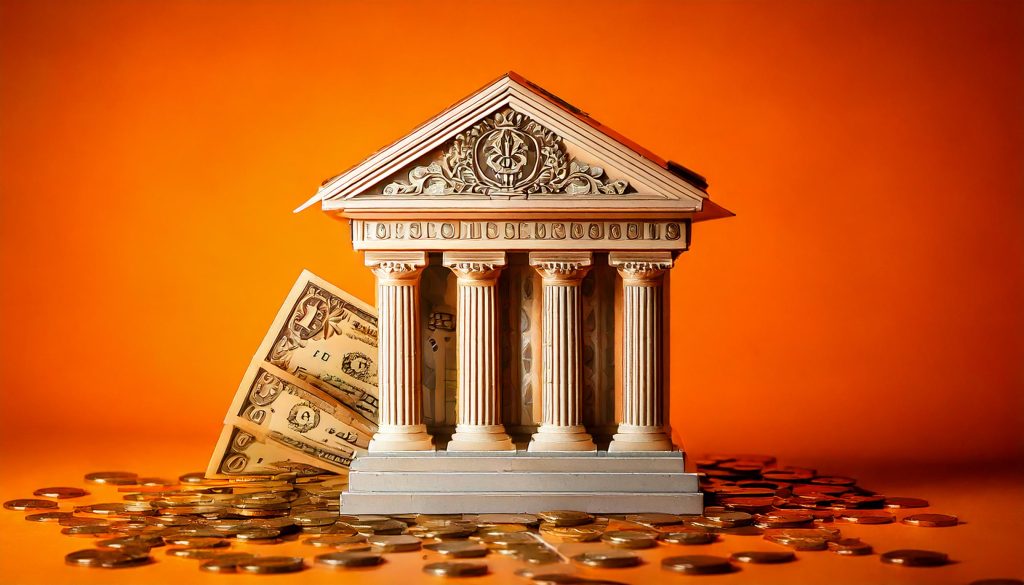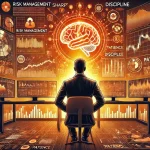The Forex market is the largest financial market in the world—but it’s not a level playing field. It’s a vast ecosystem made up of different types of participants, each with their own goals, strategies, and impact. To become a confident trader, you need to know who you’re trading against, who sets the tone, and how their activity shapes the market you’re stepping into.
In this article, we’ll explore the main players in the Forex market, how much influence each group holds, and what this means for you as a retail trader.
1. The Interbank Giants: Power Behind the Price
At the top of the Forex food chain are major commercial and investment banks. These institutions form the foundation of the interbank market, where billions of dollars in currency change hands daily.
What they do:
- Quote real-time bid and ask prices
- Execute massive transactions for themselves and their clients
- Provide liquidity to the entire market
- Act as market makers (i.e., they’re always ready to buy/sell at quoted prices)
Examples: JPMorgan Chase, Deutsche Bank, Citi, HSBC, UBS
Because of their size and the volume they handle, their activity plays a central role in setting and moving exchange rates, especially in the short term.
2. Central Banks: Silent Influencers with Loud Impact
If interbank traders move the market minute by minute, central banks move it on a deeper, more structural level.
Their tools include:
- Interest rate decisions
- Currency interventions
- Forward guidance and policy statements
For example, when the Federal Reserve raises interest rates, demand for the US Dollar often rises. If the Bank of Japan intervenes to weaken the yen, that action can spark huge volatility in JPY pairs.
While central banks don’t trade for profit, their monetary policies define the long-term direction of currency values. As a trader, following their signals is essential.
3. Multinational Corporations: Trading Without Trading
Many companies operate across borders. Think Apple, Toyota, or Shell. These firms generate revenues and expenses in multiple currencies. To protect themselves from losses caused by currency fluctuations, they use hedging strategies in the Forex market.
They might:
- Convert foreign earnings back into domestic currency
- Lock in exchange rates for future transactions
- Use forward contracts to avoid surprise losses
While corporations don’t speculate like banks or hedge funds, their routine currency operations still impact supply and demand—especially in major currencies tied to global trade.
4. Hedge Funds and Investment Managers: Big Capital, Big Moves
Hedge funds are the market’s high-risk, high-reward players. They manage massive portfolios and often view currencies as speculative assets, just like stocks or commodities.
What makes them powerful?
- The size of their positions
- Their ability to move money fast
- Their use of leverage, complex strategies, and macroeconomic analysis
A single hedge fund shifting billions into a currency based on a prediction—say, a weakening euro due to upcoming recession data—can accelerate trends or trigger reversals.
Investment managers (like pension funds and asset managers) also participate, but more conservatively, often as part of long-term portfolio balancing.
5. Retail Forex Brokers: Your Window to the Market
Retail brokers are the bridge between you and the rest of the Forex market. They provide:
- Trading platforms (like MetaTrader 4/5)
- Leverage and margin accounts
- Price feeds and liquidity (often aggregated from multiple banks)
Types of brokers:
- Market makers: take the other side of your trade internally
- ECN/STP brokers: send your orders directly to the interbank market or liquidity providers
Your broker’s business model affects pricing, execution quality, and even the fairness of your trades. That’s why it’s critical to choose a regulated, transparent broker with a clean track record.
6. Retail Traders: Growing but Limited Influence
Retail traders—people like you—make up a small portion of the overall market volume. But thanks to online platforms, mobile apps, and affordable access, this group is rapidly growing.
Retail traders typically:
- Trade with small account sizes (micro or mini lots)
- Use technical analysis or automated systems
- Seek short-term profits (scalping, day trading, swing trading)
While a single retail trader can’t move the market, mass behavior during key events—like NFP releases or FOMC statements—can amplify price reactions.
Still, retail traders are price takers, not price makers. That means you trade within a system largely shaped by larger players. Understanding this helps avoid unrealistic expectations or false confidence.
7. Algorithmic and High-Frequency Traders (HFTs)
In recent years, algorithms have entered the Forex scene in full force. High-frequency trading firms use powerful machines and lightning-fast code to:
- Detect patterns
- Exploit arbitrage opportunities
- Enter and exit trades in milliseconds
While they add liquidity, their presence can cause sudden spikes or flash crashes in prices, especially during news events.
As a retail trader, you’re unlikely to compete on speed—but you can compete on discipline, risk control, and strategy.
What Does This Mean for You as a Retail Trader?
Understanding who’s in the market—and what they’re trying to do—gives you an edge. Here’s why it matters:
- When central banks speak, listen. Their decisions shape long-term trends.
- Don’t fight interbank momentum. If large banks are driving a trend, jumping in too early against it usually leads to losses.
- Use caution around news releases. HFTs and institutional players dominate the first few minutes of high-impact events. Wait for the dust to settle.
- Choose brokers wisely. Your access to fair pricing and execution depends on their structure and regulation.
- Accept your role. You’re not here to beat the banks—you’re here to ride the wave when the timing is right.
Final Thoughts
The Forex market isn’t a battlefield where everyone fights on equal terms. It’s a network of layers, with every participant—from central banks to retail traders—playing their part. The key to long-term survival isn’t trying to overpower larger players, but understanding how they move, adapting your strategy, and trading with clarity, not ego.
In the next article, we’ll shift gears and show you exactly how to open your first trading account, choose the right broker, and get set up to place your very first trade—step by step.
FAQ – Who Really Moves the Forex Market?
Who are the biggest players in the Forex market?
The largest participants are commercial and investment banks like JPMorgan, Deutsche Bank, and Citi. These institutions form the interbank market, providing most of the liquidity and actively setting bid/ask prices. Their massive trade volume gives them the power to influence short-term price movements.
How do central banks affect Forex markets?
Central banks don’t trade for profit, but their decisions on interest rates, monetary policy, and currency interventions have long-term effects on currency values. When they raise or lower interest rates, or signal future plans, markets react—often dramatically.
Do companies like Apple or Toyota actively trade currencies?
Not in the speculative sense. Multinational corporations use the Forex market to hedge currency risk and handle cross-border transactions. Their large conversions and forward contracts affect currency supply and demand, but their intent is financial stability—not short-term profit.
What role do hedge funds play in Forex?
Hedge funds use currencies as speculative instruments. With their vast capital, they can amplify trends, especially in thinly traded markets. A big shift in their positioning can trigger rapid price changes.
How much influence do retail traders really have?
Retail traders represent a small slice of total Forex volume. While they can’t move the market individually, their collective behavior during major events (like NFP or FOMC announcements) can add momentum. However, they are generally considered price takers, not market movers.
What are algorithmic and HFT traders, and should I be worried about them?
High-frequency traders use algorithms to make ultra-fast, automated trades. They bring liquidity but can also cause sudden spikes or “flash crashes.” Retail traders shouldn’t try to compete with them on speed, but rather focus on sound strategy and risk control.
How do brokers fit into this ecosystem?
Retail brokers act as intermediaries, giving you access to the market. Some are market makers, while others use ECN/STP models to route orders to liquidity providers. Choosing a regulated, transparent broker is vital to avoid slippage, manipulation, or poor execution.
Can I compete with institutional traders?
Not directly. They have more capital, better technology, and faster execution. But you can still be profitable by:
- Understanding the market structure
- Using proper risk management
- Being patient and disciplined
You’re not here to beat the big players—you’re here to follow their lead strategically.





The use of offensive and immoral words and content in any form and by any person is prohibited.
Publishing any non-economic views, promoting the site, promoting social network pages, including contact information and unrelated links is not allowed.
Comments that violate the above rules will not be approved.